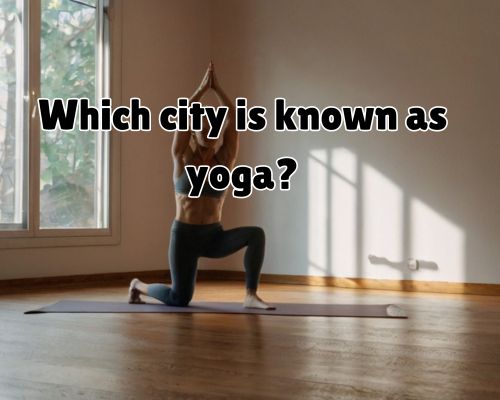Which City is Known as Yoga Capital?
If you’re looking for a city that is synonymous with yoga, look no further than Rishikesh, India.
Known as the Yoga Capital of the World, Rishikesh is a hub for spiritual seekers, yogis, and yoga enthusiasts from all over the globe.

Located in the northern state of Uttarakhand, Rishikesh is situated at the foothills of the Himalayas and is considered to be one of the holiest places in India.
The city is home to numerous ashrams, yoga schools, and meditation centers, making it an ideal destination for those looking to deepen their practice or embark on a spiritual journey.
“Yoga has been a part of Rishikesh’s culture and tradition for centuries. Ancient texts in Vedas, Puranas, and other mythological books introduce and emphasize the importance of yoga.” said Jane Benson of bikram Yoga Mornington.
Lord Shiva, one of the principal deities in Hinduism, is known as the ultimate yogi in Indian history. It is believed that he imparted the knowledge of yoga to his disciples in Rishikesh.
Rishikesh: The Birthplace of Yoga
If you are looking for a place that embodies the true essence of yoga, then Rishikesh is the perfect destination for you.
This small town in the northern state of Uttarakhand, India, is known as the birthplace of yoga and has been attracting spiritual seekers for centuries.
Historical Significance
According to Hindu mythology, Lord Shiva, the god of destruction and transformation, is said to have meditated in Rishikesh for thousands of years.
The Skanda Purana, one of the eighteen major Puranas of Hinduism, mentions Rishikesh as a place of penance and meditation. The epic Ramayana also refers to Rishikesh as a place where Lord Rama did penance after killing the demon king Ravana.
Spiritual Landscape
Rishikesh is situated on the banks of the holy Ganges River and surrounded by the majestic Himalayas.
The town is dotted with numerous ashrams and temples, making it a hub for spiritual energy. Parmarth Niketan and Swargashram are two of the most famous ashrams in Rishikesh, where you can learn yoga, meditation, and other aspects of Hinduism.
The Ganga Aarti, a daily ritual of worshiping the river Ganges, is a must-see event in Rishikesh.
The Beatles and Maharishi Mahesh Yogi
In 1968, the Beatles visited Rishikesh to learn Transcendental Meditation from Maharishi Mahesh Yogi.
The Beatles Ashram, also known as the Maharishi Mahesh Yogi Ashram, is located in Rishikesh and is now open to the public as an art gallery.
Maharishi Mahesh Yogi is credited with popularizing Transcendental Meditation in the West and is regarded as one of the most influential spiritual leaders of the 20th century.
Experiencing Yoga in Rishikesh
If you’re a yoga enthusiast seeking serenity, Rishikesh is the city for you.
Known as the yoga capital of the world, Rishikesh offers a plethora of yoga retreats and teacher training programs.
Yoga Retreats and Teacher Training
Rishikesh boasts of some of the best yoga schools in the world, offering authentic yoga practices and teachings.
Whether you’re a beginner or an advanced practitioner, you’ll find a program that caters to your needs. Popular yoga schools include Yoga Vidya Mandiram, Rishikul Yogshala, and Parmarth Niketan.
Adventure and Leisure
Apart from yoga, Rishikesh offers several adventure sports and leisure activities.
You can go white water rafting, bungee jumping, hiking, and more. The city is surrounded by nature, providing an ideal environment for adventure and leisure activities.
Travel and Accommodation
The best time to visit Rishikesh is from February to May and September to November. During these months, the weather is pleasant, and the city is bustling with tourists.
If you’re on a budget, you can stay at Zostel, a popular backpacker hostel chain. For a more luxurious stay, you can opt for hotels such as Aloha on the Ganges and Ellbee Ganga View.
Rishikesh is easily accessible from Jolly Grant Airport in Dehradun, which is about 35 km away. You can take a taxi from the airport to Rishikesh, which takes about an hour.
In addition to yoga, Rishikesh is also a pilgrimage site and offers Ayurveda and other health and fitness practices. With its serene environment, authentic yoga practices, and renowned yoga gurus, Rishikesh is the perfect destination for a yoga retreat or teacher training program.


